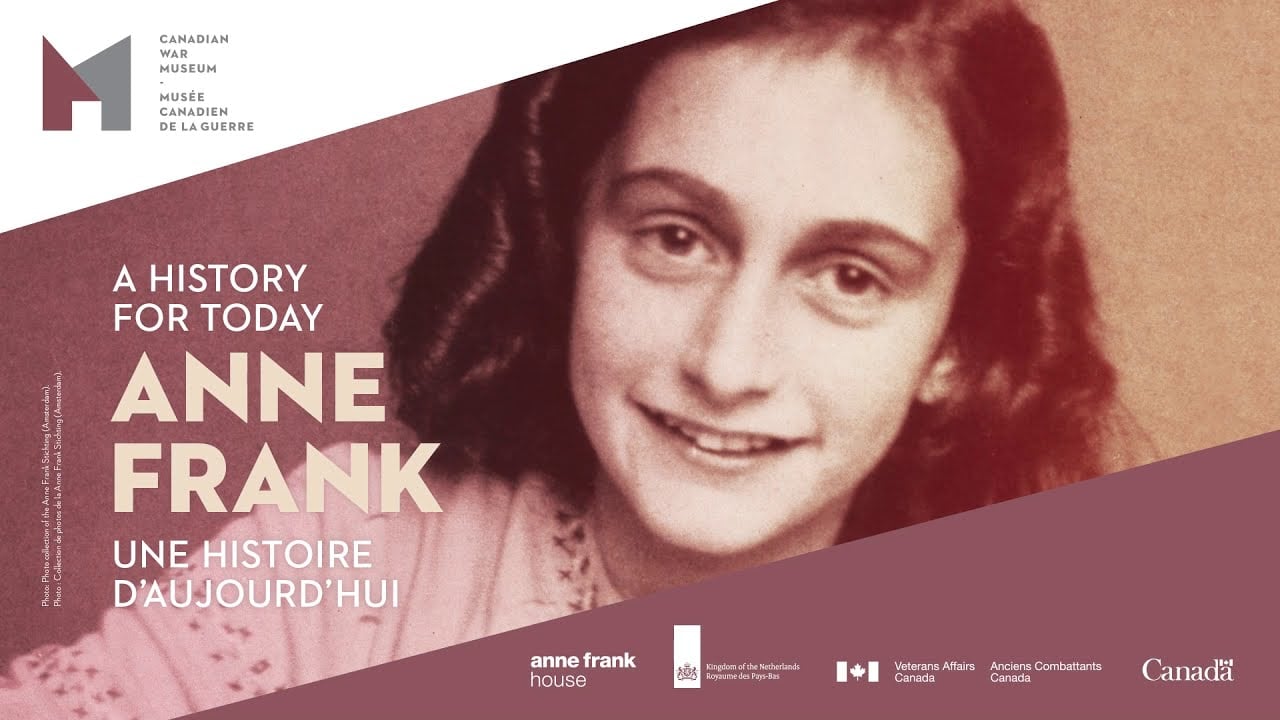“The Diary of a Young Girl,” Anne Frank’s account of her and her family’s life in hiding in Amsterdam during the Second World War has become one of the most widely read volumes of Holocaust literature since it was first published in Dutch in 1947, and in English translation in 1952 – particularly among generations of young readers.
The story of Anne’s life – and her death in the Holocaust at age 15 – has moved and inspired millions.
An exhibit, “Anne Frank – A History for Today,” created by the Anne Frank House in Amsterdam, is on view at the Canadian War Museum in Ottawa until April 25.
The Franks were a prosperous Jewish family in Frankfurt, Germany who moved to Amsterdam after the Nazis came to power in 1933. As detailed in the exhibit, the family went into hiding in July of 1942 while Amsterdam was under Nazi occupation. They lived in hiding until their discovery and arrest in August of 1944 when they were sent to the Westerbork transit camp.
The following month, the Franks were among the last group of Jews from the Netherlands to be deported to Auschwitz. Anne, and her older sister Margot, were transferred to the Bergen-Belsen concentration camp where they were among 17,000 Jewish prisoners to die during a typhus epidemic early in 1945.
The exhibit, primarily consisting of a series of panels, tells the story of the Frank family in contrast to simultaneous historical events such as the spread of fascism in Germany during the 1920s, the Nazis rise to power in 1933, the growing oppression of the Jews in Germany, including the passing of anti-Jewish laws, Kristallnacht, the Second World War, the Nazi occupation of the Netherlands, and the Holocaust.
“The story of Anne Frank and her diary is one of the most poignant of the Second World War, reflecting, as it does, the stories of so many individuals of all ages during that horrific conflict,” noted Caroline Dromaguet, acting president and CEO of the Canadian War Museum and the Canadian Museum of History, in a March 3 online event launching the exhibit.
“What makes Anne’s message so important is that her daily experiences were not just about the universal struggles in finding your identity, but also about what being discriminated against and excluded means to your daily life, and what it does to your development as a young kid. That is why she continues to connect so deeply with people today, especially young people,” added Ines Coppoolse, ambassador of the Netherlands to Canada.
Anne’s childhood, at first in Germany, and then in the Netherlands, was seemingly as happy as possible given thecircumstances, and is richly detailed in family, school, and even summer camp, photographs.
When the family went into hiding, Anne was 13 years old, and an aspiring writer whose diary documented the ordeal she and her family faced. The exhibit panels covering this period include several quotes from her diary.
“Will I ever become a journalist or writer? I hope so, oh, I hope so very much, because writing allows me to record everything , all my thoughts, ideals and fantasies,” she wrote in a 1943 diary entry.
“No one is spared. The sick, the elderly, children, babies and pregnant women – all are marched to their death,” wrote Anne as news of the fate of so many Jews began to reach the Franks in their hiding place.
And yet, in her writing, Anne doesn’t give up hope despite her understanding of what is happening and of how precarious her and her family’s situation is:
“It’s difficult in times like these: ideals, dreams and cherished hopes rise within us, only to be crushed by grim reality. It’s a wonder I haven’t abandoned all my ideals, they seem so absurd and impractical. Yet I cling to them because I still believe, in spite of everything, that people are truly good at heart. It’s utterly impossible for me to build my life on a foundation of chaos, suffering and death. I see the world being slowly transformed into a wilderness, I hear the approaching thunder that, one day, will destroy us too, I feel the suffering of millions. And yet, when I look up at the sky, I somehow feel that everything will change for the better, that this cruelty too will end, that peace and tranquility will return once more. In the meantime, I must hold on to my ideals. Perhaps the day will come when I’ll be able to realise them.”
Visit www.warmuseum.ca/annefrank/ for more information on the exhibit.






